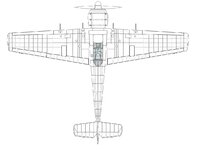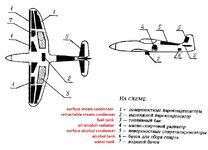GrauGeist
Generalfeldmarschall zur Luftschiff Abteilung
The early twin jet engine design followed the early twin engined "fighter" design, in that two engines were needed for range and to carry the weight of the airframe.That's what I was talking about. Perhaps a bit too much hyperbole. I was thinking about its use of non strategic materials.
Edit: I also thought that a replacement fighter/interceptor would imply heavy firepower. Hence a twin engine design.
The He178 was able to fly with a single HeS3 because of it's size. It weighed about 3,500 pounds empty.


